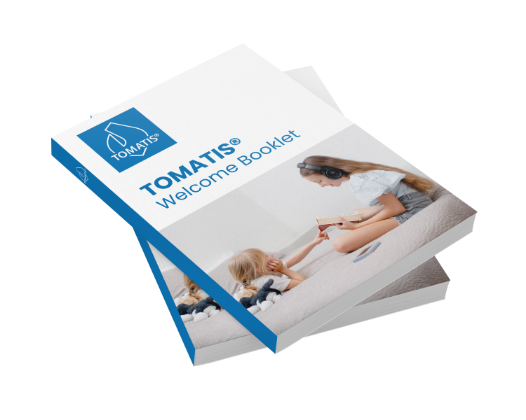Addressing Speech and Language Disorders: How the Tomatis® Method Can help?
Learning and communicating can seem easy as they are natural for most of us. But for one in ten people, it’s a daily battle. Their ability to properly process sensory information is compromised. Whether it is a childhood speech disorder or an adult speech impediment, the Tomatis® Method can help develop voice and sound production.
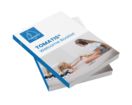
Complimentary Handbook to Begin with Tomatis®
Table of Contents
- Understanding Speech and Language Impairments
- Common Speech and Language Disabilities
- Signs of Speech & Language Impairments
- Speech Disorders and Co-Occurring Conditions
- Benefits of the Tomatis® Method integrated in Speech & Language therapy
- To which speech and language therapies can the Tomatis® Method be added to?
- The Tomatis® Method Success Stories
- Frequently Asked Questions
Understanding Speech and Language Impairments
Speech and Language impairments are among the most common childhood disabilities—and they are highly treatable in most cases. Learning that your child has a speech impediment can be very upsetting. However, studies indicate that approximately 5% of children have distinct speech impediments before entering Grade 1.
The Tomatis® Method is a neurosensory (ear-brain-body) training method that is non-invasive, natural, and can be used in complement with speech and voice therapy to elevate client results. Whether it is a childhood speech disorder or an adult speech disability, the Tomatis® Method can help develop voice and sound production.
What is a speech disability or speech impairment?
Speech refers to the way in which sounds and words are produced, whereas language involves the use of words and gestures to understand and communicate information. A speech disorder can affect how a person forms sounds into words. Kids facing language disorders might experience difficulties in comprehending or expressing themselves across various communication modes—verbal, nonverbal, and written. Children experiencing speech and language disorders might encounter challenges in:

Articulation
Sound production
Fluency
Rhythm and flow
Voice
Quality of pitch, resonance, and loudness

Comprehension
Understanding
Expression
Communicating thoughts
A speech and language assessment is crucial
The first step in evaluation is to rule out hearing or listening problems. Listening as an auditory processing issue is the most common cause of language problems. It is ideal to seek professional help and get your child assessed to eliminate any other underlying conditions.
Common Speech and Language Disabilities
Stuttering
Interruptions in the flow of speech, like repeating sounds or words.
Aphasia
Difficulty in understanding or producing language, often due to brain damage.
Dysarthria
Weakness in the muscles used for speaking, causing slurred or slow speech.
Speech Sound Disorders
Motor speech issues with making certain sounds, leading to pronunciation difficulties.
Voice Disorders
Issues with voice pitch, loudness, or quality, like hoarseness, hyper and hyponasal speech.
Social Communication Disorders
Challenges with social aspects of communication, such as understanding social cues.
Childhood Apraxia of Speech
Difficulty in coordinating mouth movements for speech, despite having the ability and desire to speak.
Language Disorders
Problems with expressing or understanding spoken or written language.
Signs of Speech & Language Impairments
Children: Signs of Speech & Language Difficulties
Children learn speech skills as they grasp various sounds and language rules, often making errors early on until improvement occurs. By age three, most kids reach communication milestones, but unmet ones could indicate future speech delay.
Speech therapy addresses these disorders, and incorporating the Tomatis® Method in your speech therapy regimen aids voice and sound development in both children and adults. Common symptoms include repetitive sounds, word elongation, frustration, pauses, limited vocabulary, and vague words. If your child struggles to be understood by unfamiliar people, there might be a speech disorder concern.
Speak with your doctor or see a speech-language pathologist if your child:
- Says p, b, m, h, and w incorrectly in words (1-2 years)
- Says k, g, f, t, d, and n incorrectly in words or phrases (2-3 years)
- Does not smile or interact with others
- Has trouble playing and talking with other children
- Repeats phrases, repeats first sounds of words— “c-c-c-catt” for “cat”
- Shows frustration when trying to get words out
- Limited vocabulary, lack of pronunciation
- Speech delay, stammering
Signs of speech impediments in adults can be characterised by:
- Struggles to say sounds or words
- Repeats words or parts of words
- Prefers short phrases
- Uses words in the wrong order
- Lack of understanding and difficulty using words
- Trouble imitating speech sounds
- Slow or rapid rate of speech
- Slurred dialogue
Speech Disorders and Co-Occurring Conditions
Speech disorders frequently coincide with various other conditions, resulting in intricate challenges affecting communication and overall development. To list a few:
Speech and Language Disorders
Speech and Autism Spectrum Disorders (ASD)
Speech difficulties occur in about 30% to 40% of individuals with ASD, impacting both language skills and social interactions. Individuals might struggle with delayed language acquisition, echolalia, or using speech for social communication, making interactions more challenging.
Speech and Learning Disabilities (e.g., Dyslexia)
Present in around 20% to 30% of cases, impacting reading, writing, and communication. Various intellectual disabilities can impact speech and language development, leading to difficulties in articulation, comprehension, or expressive language skills. Challenges in phonological processing can hinder proper word formation and pronunciation.
Speech and Attention-Deficit/Hyperactivity Disorder (ADHD)
Contributes to speech issues in roughly 20% of cases due to attention and focus challenges. This co-occurrence necessitates addressing attentional issues alongside speech therapy to manage speech fluency and maintain focus during conversations.
Speech and Auditory Processing Difficulties (Auditory Processing Disorder)
Linked to approximately 40% of individuals with speech sound disorders, these difficulties affect an individual’s ability to interpret auditory information, leading to challenges in speech sound discrimination.
Speech and Sensory Issues
Often observed in about 50% of cases alongside speech disorders. Individuals experiencing sensory challenges might struggle with modulating speech volume, pitch, or articulation, impacting their ability to communicate effectively. Sensory issues can also impact attention during speech therapy sessions.
Addressing these co-occurring conditions alongside speech disorders requires a comprehensive approach involving collaborative efforts among speech therapists, educators, psychologists, and medical professionals. Tailoring interventions considering the complexities arising from these interactions is crucial for effective management and support. Integrating strategies that address both speech-related challenges and the impact of co-occurring conditions is essential for successful intervention and overall improvement.
Potential Benefits of adding Tomatis® in your Speech & Language therapy
Alfred Tomatis said, “The voice can only reproduce what the ear hears.” The Tomatis® Method offers a range of benefits for individuals grappling with speech and language disorders, providing a unique approach that addresses these challenges comprehensively. Utilising auditory stimulation and neuroplasticity, the Tomatis® Method complements conventional speech, voice and language therapy to elevate a client’s capacity for attentive listening to both external voices and self-expression.
It contributes to refining speech quality, fostering rhythmic conversational exchanges, and enhancing speech prosody. Harnessing the auditory feedback loop through the use of the microphone, bone conduction, and the Tomatis® effect can be instrumental in achieving these goals. Notable advantages*, as observed by practitioners and parents, include:
Refined Auditory Processing
Enhances speech perception by training individuals to distinguish and process speech sounds.
Better Articulation and Phonological Skills
Aids in speech muscle training and sound differentiation, improving clarity in articulation and language understanding.
Rhythmic Speech Fluency
Fluency impairment often disrupts speech rhythm. Tomatis helps in achieving a steady speech rhythm, leading to more fluent communication.
Voice Quality and Pitch Improvement
Focuses on pitch and resonance, aiding those with voice impairments to develop a clearer, more confident voice.
Enhanced Language Skills
Expands vocabulary, comprehension, and expression by linking auditory input with language processing.
Improved Sensory Integration
Assists in adapting to sensory stimuli, enhancing communication, social interaction, and emotional control.
Improves Social Skills and Confidence
Helps to boost communication skills, leading to improved social interactions, relationships, greater self-assurance, and self-esteem.
Increases Cognitive Abilities
Enhances memory, attention, and concentration, key factors for successful communication and learning.
Emotion and Stress Management
Facilitates emotional regulation via sensory integration, assisting in handling impulsivity, mood swings, and potentially diminishing stress levels.
*It’s important to note that the Tomatis® Method is not a substitute for traditional therapy for speech and language disorders, but rather, it can be added as a complementary approach. The results of the method may vary from person to person, and it’s important to consult with a professional who can evaluate and suggest the best approach for your individual needs.
What are some speech and language therapies that can be complemented by the Tomatis® Method?
-
Speech and Language Therapy:
Addresses articulation, fluency, voice issues, comprehension, and expression challenges through standard methods, with the Tomatis® Method enhancing outcomes by focusing on auditory processing, refining sound perception, aiding speech clarity, and improving understanding and expression. -
Articulation Exercises:
Complemented by Tomatis® Method’s training in precise sound perception and audio vocal work. Helps those with sound disorders enhance articulation and pronunciation. -
Voice Therapy and Fluency Interventions:
Aims for vocal quality and resonance improvement. Tomatis® Method’s auditory training enhances vocal control, refining voice quality. The Method aids fluency disorders, improving speech rhythm and flow for smoother speech patterns too. -
Language Comprehension Interventions:
Enhances auditory processing for more effective language comprehension in individuals facing comprehension difficulties. Tomatis® enhances the brain’s interpretation of auditory information, a pivotal factor in improving comprehension. -
Expressive Language and Communication Programs:
The Tomatis® Method boosts auditory processing, facilitating better expression in interventions targeting expressive language issues. The program’s holistic approach benefits verbal and nonverbal skills, improving communication.
Frequently Asked Questions
-
Can the Tomatis® Method address co-occurring conditions with speech and language difficulties?
Yes, the Tomatis® Method's holistic approach can benefit individuals with co-occurring conditions like sensory issues, attention difficulties, and learning disabilities. Its emphasis on underlying sensory and cognitive factors aligns with addressing these challenges. -
My child gets stressed when it is time to head to a clinic. Can we implement the Tomatis® Method at home?
We pride ourselves to present to you the Tomatis® at-home program where you or your child can receive the benefits of the method in the comfort of your home. -
How does the Tomatis® Method work alongside speech exercises?
The Tomatis® Method capitalizes on audio vocal work to enhance speech exercises by training the ear to perceive speech sounds accurately. This makes speech exercises more effective as individuals develop better control over their speech muscles, leading to improved articulation and pronunciation. -
Why should the Tomatis® Method be integrated into my child’s speech therapy?
Integrating the Tomatis® Method into your child's speech therapy can improve auditory processing, listening skills, language development, and attention, enhancing overall therapy outcomes. This method stimulates brain areas responsible for language and focus, supporting better speech production and comprehension. -
Is the Tomatis® Method suitable for both children and adults with speech and language disorders?
Yes, the Tomatis® Method is suitable for individuals of all ages. It can be tailored to address the unique needs of children and adults facing speech and language challenges. -
How long does it typically take to see results with the Tomatis® Method?
Results can vary based on the individual's needs and the severity of their speech and language challenges. Some individuals may experience noticeable improvements within a few sessions, while others might require more time to see substantial changes. -
Can the benefits of the Tomatis® Method be maintained over time?
Yes, the benefits of the Tomatis® Method can be maintained with consistent practice and reinforcement. Individuals are often provided with strategies and exercises to continue enhancing their communication skills beyond the intervention period.
Start your journey with Tomatis®
To maximize your chances of success with the Tomatis® Method, please follow these steps :
Get your personalized Tomatis® Welcome Booklet
Find the best Practitioner with our interactive Map
Start your Listening Program and transform your Life
